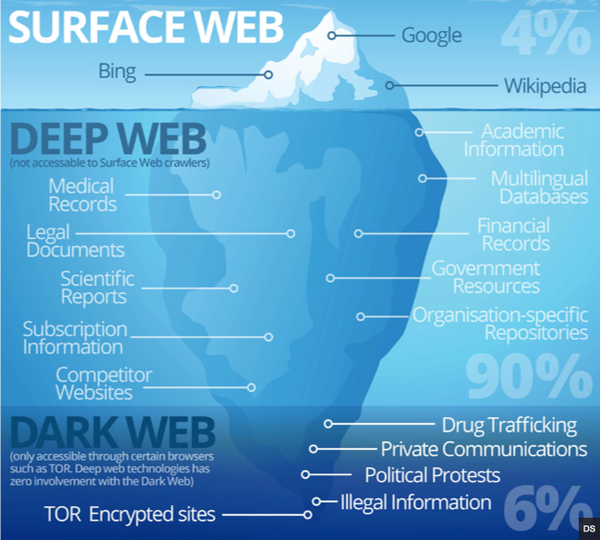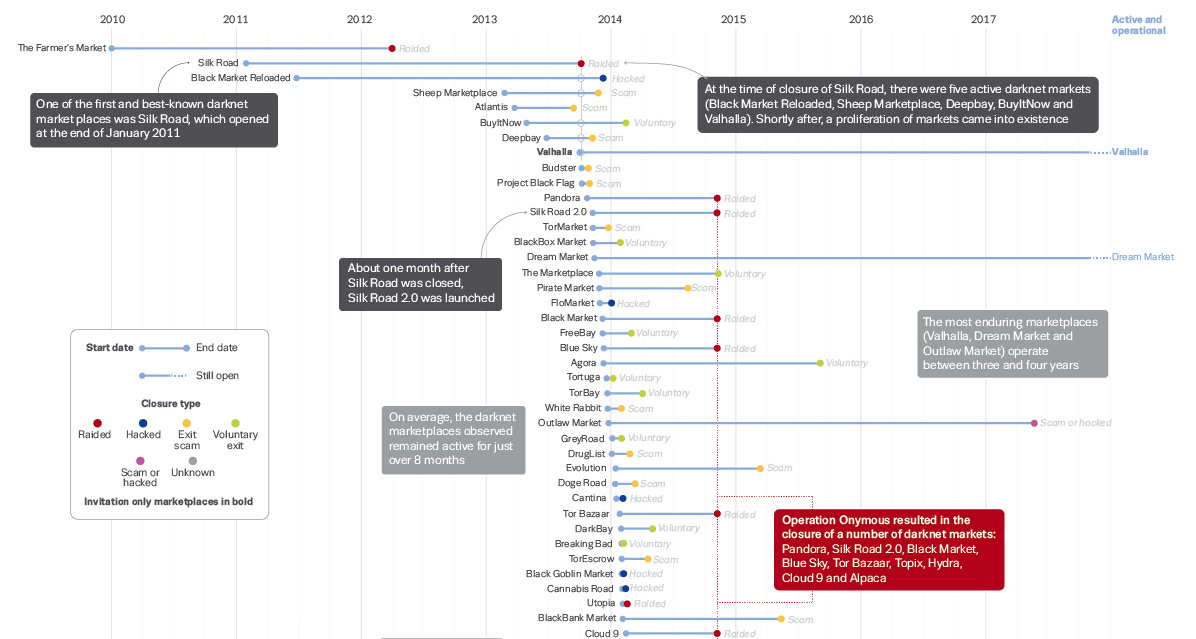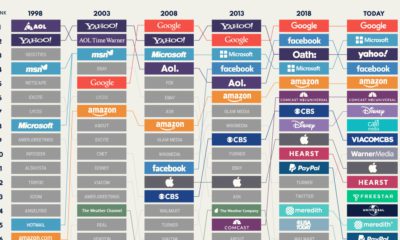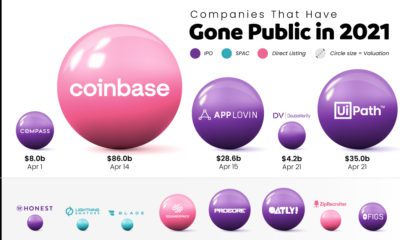In 2018, ex-Google CEO, Eric Schmidt, made headlines after predicting the internet would eventually split into two halves – one dominated by China and the other by the United States. While that vision of the future may come to pass, the internet already has a noteworthy division (coincidentally related to Google): indexed and non-indexed. The indexed internet is what we’re all familiar with, everything from gif-laden Geocities websites to the webpage you’re reading this on. Parts of the non-indexed portion of the internet may be familiar as well. This includes services like online banking, or content behind paywalls or sign-in forms. Most of this part of the internet – referred to as the Deep Web – is non-indexed.
Dipping Below the Surface
Beyond easily accessible areas of the internet, lies the Dark Web, which is primarily accessed using specific software such as Tor or I2P. Practically speaking, connection requests via TOR are re-routed several times before reaching their destination. This allows people to maintain their anonymity while accessing dark web content. The Dark Web lives in the public consciousness as a digital Wild West; a place where every vice can be explored and procured within the vacuum of lawlessness. There’s truth to the reputation, as dark net markets sell everything from illegal drugs to databases of stolen personal information. Today’s graphic, via Europe’s drug monitoring organization, EMCDDA, gives a detailed overview of dark web marketplaces going all the back to 2010. One of the first and most well known of these markets was The Silk Road, which opened at the beginning of 2011. Around the time of its first anniversary, the market reached an estimated $22 million in annual sales.
The Short Shelf Life of Markets
Not surprisingly, governments are not thrilled at the idea of unregulated (and untaxed) markets operating in the dark web. Law enforcement and three-letter agencies have thrown considerable efforts into shutting them down, though with mixed results. A raid on The Silk Road in 2013 did end the reign of the popular marketplace, but it had the effect of spawning dozens of new markets to help fill the void. That said, only a few end up lasting more than a year and the average lifespan of a dark web market is just eight months.
Some markets close down, or were simply a scam to begin with, but larger markets tend to fall victim to raids by law enforcement. High profile examples include Operation Onymous (2014), and Operations Bayonet and GraveSec (2017), which shut down the popular markets AlphaBay and Hansa. To give an idea of scale, Hansa reportedly offered more than 24,000 drug product listings at its height. According to EMCDDA’s report, there are currently nine active markets. If history is any guide though, many of them will be gone by year’s end. Update: This article has been revised to better reflect the source of the data.
on But fast forward to the end of last week, and SVB was shuttered by regulators after a panic-induced bank run. So, how exactly did this happen? We dig in below.
Road to a Bank Run
SVB and its customers generally thrived during the low interest rate era, but as rates rose, SVB found itself more exposed to risk than a typical bank. Even so, at the end of 2022, the bank’s balance sheet showed no cause for alarm.
As well, the bank was viewed positively in a number of places. Most Wall Street analyst ratings were overwhelmingly positive on the bank’s stock, and Forbes had just added the bank to its Financial All-Stars list. Outward signs of trouble emerged on Wednesday, March 8th, when SVB surprised investors with news that the bank needed to raise more than $2 billion to shore up its balance sheet. The reaction from prominent venture capitalists was not positive, with Coatue Management, Union Square Ventures, and Peter Thiel’s Founders Fund moving to limit exposure to the 40-year-old bank. The influence of these firms is believed to have added fuel to the fire, and a bank run ensued. Also influencing decision making was the fact that SVB had the highest percentage of uninsured domestic deposits of all big banks. These totaled nearly $152 billion, or about 97% of all deposits. By the end of the day, customers had tried to withdraw $42 billion in deposits.
What Triggered the SVB Collapse?
While the collapse of SVB took place over the course of 44 hours, its roots trace back to the early pandemic years. In 2021, U.S. venture capital-backed companies raised a record $330 billion—double the amount seen in 2020. At the time, interest rates were at rock-bottom levels to help buoy the economy. Matt Levine sums up the situation well: “When interest rates are low everywhere, a dollar in 20 years is about as good as a dollar today, so a startup whose business model is “we will lose money for a decade building artificial intelligence, and then rake in lots of money in the far future” sounds pretty good. When interest rates are higher, a dollar today is better than a dollar tomorrow, so investors want cash flows. When interest rates were low for a long time, and suddenly become high, all the money that was rushing to your customers is suddenly cut off.” Source: Pitchbook Why is this important? During this time, SVB received billions of dollars from these venture-backed clients. In one year alone, their deposits increased 100%. They took these funds and invested them in longer-term bonds. As a result, this created a dangerous trap as the company expected rates would remain low. During this time, SVB invested in bonds at the top of the market. As interest rates rose higher and bond prices declined, SVB started taking major losses on their long-term bond holdings.
Losses Fueling a Liquidity Crunch
When SVB reported its fourth quarter results in early 2023, Moody’s Investor Service, a credit rating agency took notice. In early March, it said that SVB was at high risk for a downgrade due to its significant unrealized losses. In response, SVB looked to sell $2 billion of its investments at a loss to help boost liquidity for its struggling balance sheet. Soon, more hedge funds and venture investors realized SVB could be on thin ice. Depositors withdrew funds in droves, spurring a liquidity squeeze and prompting California regulators and the FDIC to step in and shut down the bank.
What Happens Now?
While much of SVB’s activity was focused on the tech sector, the bank’s shocking collapse has rattled a financial sector that is already on edge.
The four biggest U.S. banks lost a combined $52 billion the day before the SVB collapse. On Friday, other banking stocks saw double-digit drops, including Signature Bank (-23%), First Republic (-15%), and Silvergate Capital (-11%).
Source: Morningstar Direct. *Represents March 9 data, trading halted on March 10.
When the dust settles, it’s hard to predict the ripple effects that will emerge from this dramatic event. For investors, the Secretary of the Treasury Janet Yellen announced confidence in the banking system remaining resilient, noting that regulators have the proper tools in response to the issue.
But others have seen trouble brewing as far back as 2020 (or earlier) when commercial banking assets were skyrocketing and banks were buying bonds when rates were low.

















